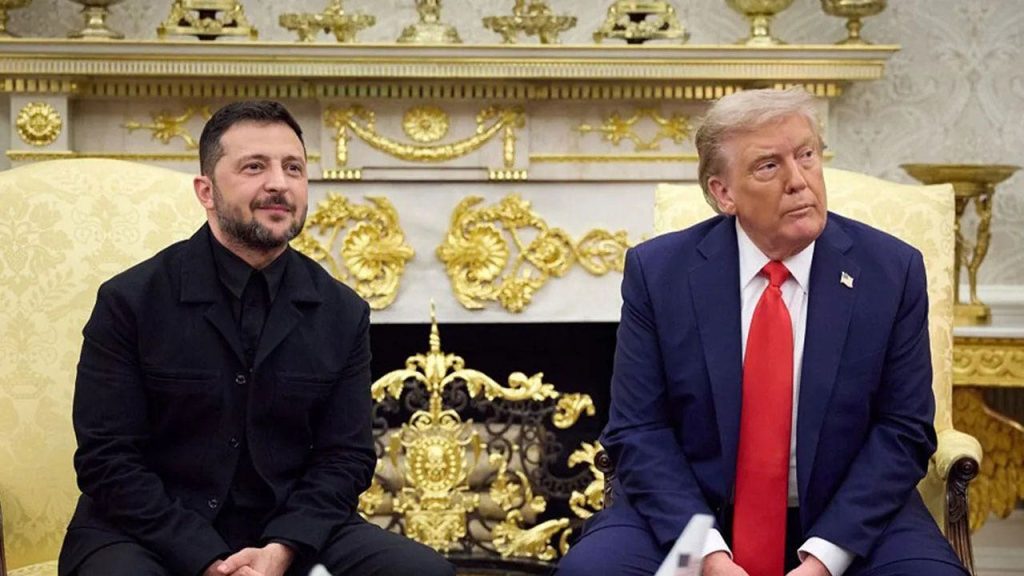Trump and Zelenskyy May Meet as NATO Faces Pressure Over Ukraine
Secretary of State Marco Rubio announced Tuesday that President Donald Trump and Ukrainian President Volodymyr Zelenskyy could meet next week during the UN General Assembly in New York City. This potential meeting comes at a critical moment in the Ukraine conflict, with NATO facing mounting pressure to take more aggressive action against Russia. Speaking from Israel before departing for Qatar, Rubio emphasized Trump’s diplomatic efforts: “President Trump has had multiple calls with Putin, multiple meetings with Zelenskyy, including probably next week again in New York. He’s trying to do everything possible to bring the war to an end.” The Secretary noted that the administration has been collaborating closely with European partners on security guarantees, which he described as essential to any negotiated settlement of the conflict.
The potential meeting occurs against a backdrop of increasing calls for more decisive NATO intervention in Ukraine. Poland’s foreign minister, Radoslaw Sikorski, recently urged NATO allies to enforce a no-fly zone over Ukraine, arguing that such a measure would protect not only Ukrainian civilians from Russia’s aerial bombardments but also neighboring NATO countries that share borders with Ukraine. “We as NATO and the EU could be capable of doing this, but it is not a decision that Poland can make alone,” Sikorski told German newspaper Frankfurter Allgemeine. He personally advocated for considering Ukrainian requests to shoot down Russian aircraft over Ukrainian territory, suggesting it would be “advantageous” for NATO. This proposal represents a significant escalation from current NATO policy, which has thus far avoided direct military confrontation with Russian forces.
However, the likelihood of NATO approving such a measure remains slim. The alliance previously rejected a similar request made by Zelenskyy in 2022, with the Biden administration leading opposition to the proposal. Russian officials have made their position on such intervention unmistakably clear, with Deputy Chairman of Russia’s Security Council Dmitry Medvedev declaring via Telegram that implementing a no-fly zone or allowing NATO countries to shoot down Russian drones would mean “only one thing – a war between NATO and Russia.” This stark warning underscores the delicate balance Trump must maintain in supporting Ukraine while avoiding a direct military confrontation between NATO and Russia, which could potentially trigger a wider European conflict or worse.
President Trump faces growing pressure both domestically and from Western allies to adopt a tougher stance against Russian President Vladimir Putin. While Trump has repeatedly threatened Moscow with sanctions, he has yet to implement significant financial penalties since returning to office, despite several self-imposed deadlines having passed. This hesitation has drawn criticism from those advocating for a more forceful response to Russia’s ongoing aggression in Ukraine. However, Rubio defended the President’s approach, stating that while Trump may eventually conclude that a peace deal with Putin is impossible, “he’s not there yet.” The Secretary emphasized Trump’s unique position on the world stage: “The only leader in the world that can talk to both the Ukrainians, Europeans, and also to the Russians is President Trump. He’s not going to easily forfeit that role.”
The diplomatic dynamics are further complicated by Poland’s recent security concerns regarding Russian drones entering its airspace. This incursion into NATO territory has heightened tensions and contributed to calls for more robust measures against Russian aerial activities. For Ukraine, which has endured nearly three years of full-scale war and continues to face devastating Russian bombardments across its territory, the prospect of enhanced air defense capabilities represents a critical need. Zelenskyy has consistently appealed for greater Western support, particularly in defending Ukrainian airspace against Russian missiles, drones, and aircraft that have targeted civilian infrastructure throughout the country. The potential meeting with Trump offers Zelenskyy another opportunity to make his case directly to the American president at a time when Ukraine’s military position has grown increasingly precarious.
Rubio highlighted the significant stakes involved in Trump’s diplomatic efforts, warning that if the President were to disengage from mediation attempts or impose sanctions and declare “I’m done,” then “there’s no one left in the world that could possibly mediate the end.” This assessment underscores the Trump administration’s view of the President as uniquely positioned to facilitate peace negotiations between Russia and Ukraine. Rubio acknowledged that the situation might eventually reach a point where such mediation becomes impossible, but expressed hope that this outcome could be avoided, describing the conflict as “a really bad war” that Trump genuinely wants to end. As the potential meeting in New York approaches, all eyes will be on whether Trump can leverage his relationships with both Zelenskyy and Putin to make meaningful progress toward resolving a conflict that has destabilized European security, caused immense human suffering, and continued to threaten wider international implications.


